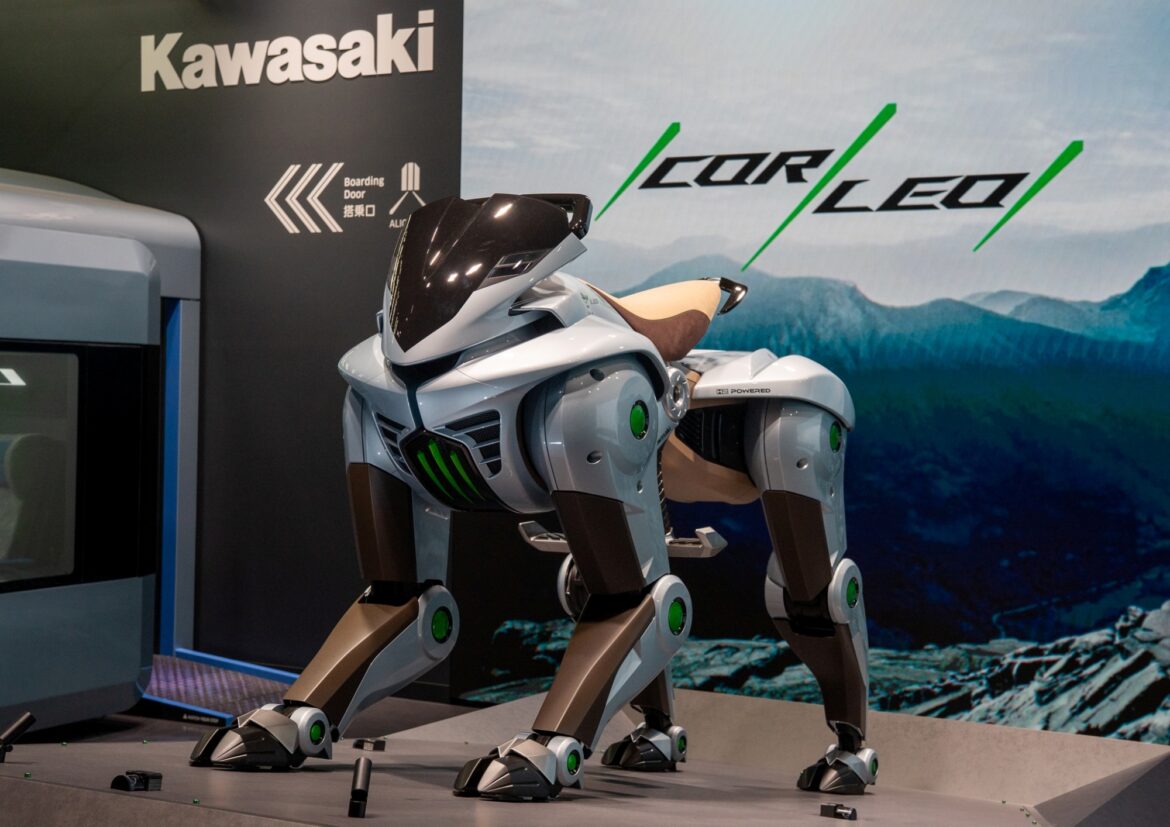While the world is still adapting to the transition from internal combustion engines (ICE) to electric vehicles (EVs), Kawasaki Heavy Industries has decided to blend the olden times of horse riding for transportation, but with a touch of modern technology. Enter the Corleo — a rideable, hydrogen-powered four-legged robotic vehicle.
The unveiling took place during a showcase event for the upcoming Osaka-Kansai Expo 2025. Corleo represents a step into the future, guided by inspiration from the past when it comes to personal transport.
Its four legs are designed to navigate uneven terrain and a variety of landscapes with ease. Each limb functions independently and is equipped with advanced AI for enhanced balance and navigation. Though its movement and design are inspired by agile animals like deer and panthers, Corleo is intended to be ridden like a horse.
Kawasaki claims the vehicle is beginner-friendly, offering excellent stability, manoeuvrability, and the ability to travel across mountainous terrain. Powering Corleo is a 150cc hydrogen engine, which generates electricity for its limbs — a reflection of Japanese manufacturers’ growing focus on clean energy solutions.


In terms of design, Corleo draws inspiration from Kawasaki motorcycles, featuring a sleek, streamlined body and built-in lights suitable for various conditions.
But how does one control a robotic horse? The answer lies in body movement. Corleo responds to shifts in the rider’s centre of gravity, adjusting its steps accordingly. A heads-up display (HUD) provides real-time data, including hydrogen levels, navigation, movement stability, and weight distribution.


Its rubber “hooves” provide improved grip on both hard and soft surfaces, and it can even hop over obstacles — although precise performance specs have yet to be released.
At this stage, Corleo remains a conceptual model, with no confirmed details regarding speed, range, or battery life. While Kawasaki hasn’t announced a specific development timeline or commercial release date, the company is aiming to bring the robotic four-legger to market by 2050.
(Source: Interesting Engineering, Robotics and Automotive News)
Follow us on Instagram, Facebook, Twitter or Telegram for more updates and breaking news.

